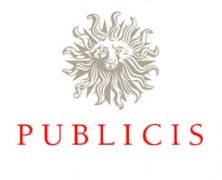 Moody’s Investors Service has affirmed the Baa1 senior unsecured and Prime-2 commercial paper ratings of Omnicom Group following the recent announcement that the company has entered into a definitive agreement to merge with
Moody’s Investors Service has affirmed the Baa1 senior unsecured and Prime-2 commercial paper ratings of Omnicom Group following the recent announcement that the company has entered into a definitive agreement to merge with
Publicis Groupe in an all-stock transaction that values the combined company at roughly $35 billion. The stable rating outlook is maintained.
The transaction creates the world’s largest advertising and marketing services firm with combined revenue of about $23 billion. The combination will be a cross-border merger of equals under a new Netherlands-based holding company, Publicis Omnicom Group (the “Group”), which will assume $5.9 billion of existing debt at both entities (roughly $4.1 billion at Omnicom and approximately $1.8 billion at Publicis). The merger is designed to be tax-free to the shareholders of both companies and structured so that both shareholder groups will each own
approximately 50% of Publicis Omnicom Group after a payout of special dividends. Both boards of directors have approved the transaction, which, subject to shareholder and regulatory approval, as well as customary closing conditions, is expected to close by the fourth calendar quarter of 2013 or first quarter of 2014.
“The proposed merger creates a new industry giant that should enhance Omnicom’s above-par organic revenue growth and solid operational performance given the complementary nature of the companies’ blue chip customer base, service offerings and geographic presence,” said Moody’s vice president, Gregory Fraser.
More from the report:
Following transaction closing, WPP Plc (Baa2 stable) will retreat to the second largest ad firm with Interpublic Group (Baa3 stable) relegated to a distant third.
As the global leader with substantial scale across communications, advertising, marketing and digital services and a deeper geographic presence in faster growth emerging markets, the combination is expected to provide Omnicom with multifaceted service offerings to fulfill clients’ expanding needs across multiple media channels and geographies.
The Group will also likely accelerate its efforts towards digital innovation and benefit from cross selling opportunities into the broader client base. Scale could also allow the combined group to protect against and better manage relationships with technology majors (e.g., Google, Facebook) that are striving to commoditize agency returns via the use of new media. Further, the combined company’s improved pricing power should enhance its ability to negotiate better ad rates for customers’ media placements across various distribution platforms. Management projects roughly $500 million of annual cost synergies from the elimination of redundant shared services and improved scale economies. However, we do not view these synergies as material over the 12-18 month rating horizon since management expects a five-year timeframe to achieve the full run-rate and outlays of approximately $400 million.
The transaction is occurring at a time when the media landscape is becoming more competitive with the emergence of major Internet players and undergoing rapid change due to the growing importance of digital, mobile and social media platforms as relevant communication channels.
This is being driven by the secular shift of advertising spend to online platforms, growth in e-commerce, rising online consumer purchase activity, proliferation of new technology and mobile devices, and evolving client needs that require increased multi-channel participation. Hence, in an era where the quickening pace of technology requires advertising firms to be more nimble and responsive, rather than larger, more complex and bureaucratic, we view the magnitude of the transaction combined with significant time and resources required to integrate the two companies to be a possible distraction that could inhibit the combined company’s creative execution and timely adoption of new media for its clients, thus restraining organic revenue growth.
Second, the new entity will have to overcome numerous customer conflicts and establish firewall solutions to protect client confidentiality since both Omnicom and Publicis will now be serving several rival customers that compete in the same industry (e.g., AT&T and Verizon). The holding company structure is designed to act as an umbrella organization overseeing various network agencies that work independently from one another.
In theory, this allows competing clients to be placed in separate networks and avoid conflicts. However, the sharing of best-in-class creative execution techniques across network agencies to enhance value for its client base is partly the reason for the merger, according to management. We believe it will be difficult for larger multi-national clients to move to another global provider given the lack of available alternatives (as the industry has experienced meaningful consolidation) and switching would be disruptive to their operations.
Nonetheless, we expect some client defections to occur gradually over time and view this merger as a reason for some clients to accelerate their plans to allocate more of their ad dollars to digital, mobile and social media channels to reduce their Group exposure and exploit more innovative services at niche firms that offer more focused online advertising capabilities.





